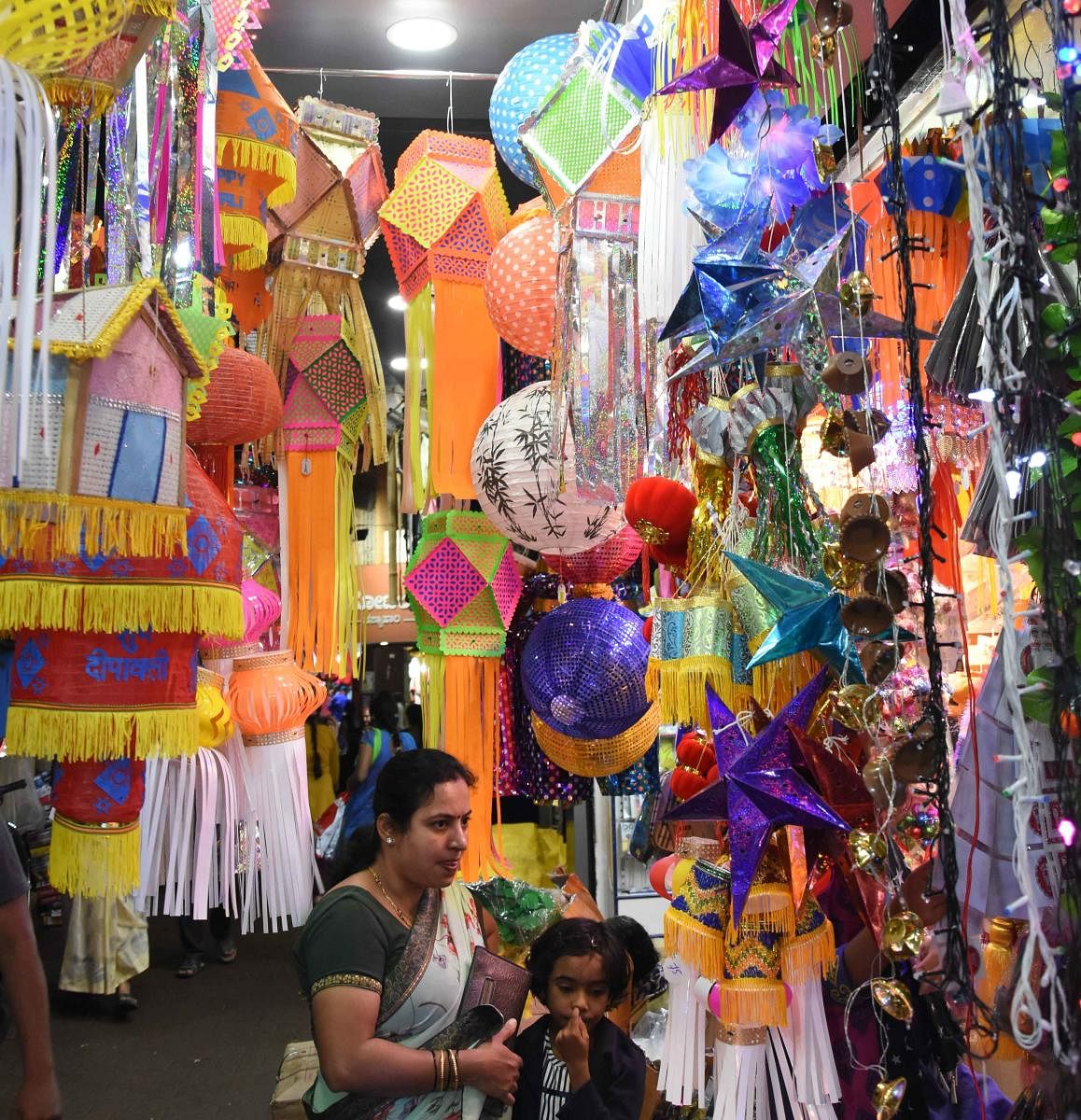Has the festive season given a big push to consumption demand at a time when the economy is going through a phase of gloom and doom? Was Finance Minister Nirmala Sitharaman successful in fuelling consumption demand to perk up with the corporate tax cuts and the consumer loan melas just ahead of the festive season? Well, the consumption story may not be shaping up across sectors uniformly.
Usually, the festive season from Dasara to Deepavali is when the most consumption happens in India. From cars and real estate deals, gold and silver to consumer electronics and even the release of much-awaited Bollywood flicks are scheduled for this time of the season. It was not much different this time around, with manufacturers and retailers hoping that the festive season would bring great sales and cheer at a time when most aces are down and sentiment very low for corporates, retail outlets and consumers alike.
Dhanteras in the North and Dhan Trayodasi in the South, ahead of Deepavali, is considered auspicious in the Hindu calendar and has become a big occasion for buying precious metals like gold and silver. This time around, the top jewellery brands, which came up with several attractive deals, were in for a big shock. Some saw sales down by as much as 40% in the run up to Dhanteras last week, compared to last year.
Weak footfalls and muted sales seem to have put paid to jewellers’ expectations of a turnaround in consumer sentiment. Trade associations said only 6,000 kg of gold was sold this Dhanteras as against 17,000 kg in 2018. The huge spurt in gold price, which crossed Rs 39,000 per 10 grams, seem to have played spoilsport. Lurking economic uncertainty in the near-term seems to have forced consumers to put off plans to buy precious metals. While gold-buying touched a low of 676 tonnes in 2016 due to demonetization of large currencies that year, it stood at a moderate 770 tonnes in 2018.
In anticipation of a pick-up in demand, jewellers and industry-watchers had estimated that gold consumption would be over 860 tonnes in 2019. That is unlikely to happen given the huge slump in sales in the festive season.
The consumption story played out differently in apparel, smartphones and consumer goods, sales of which reportedly went up by 7-9% this festive season. While many analysts attributed the growth to mid-segment goods, consumption may not have been even across segments in rural, semi-urban and urban markets. Attractive discounts and flexible payment options may have pushed up sales to an extent, but the festive sales momentum is unlikely to sustain for the rest of the fiscal if the economic sentiment continues to be low.
Shoppers seem to be flocking to large e-commerce platforms to buy large appliances, mobile phones, fashion, grocery, home and kitchenware. Deep discounts, free delivery and deferred payment options pushed up sales on Amazon and Walmart-Flipkart. The biggies in the e-commerce business are charged with having resorted to predatory pricing to undercut small offline stores and raking in some $5 billion in revenues this year against $3 billion in the festive season last year.
Very different is the story of automobiles and two-wheelers that continued to face the brunt of a slowdown during April-September 2019. Every month in that period, the companies had reported dip in sales by double digits. In this backdrop, even a 5-7% uptick in sales of cars and a more modest bump up for two-wheeler sales during the festive season has brought some cheer for the dozen-odd players. Maruti Suzuki, Hyundai and Mahindra were among the companies that did well, going by industry figures. However, the sentiment amongst automakers remains justifiably subdued. Two reasons stand out for their angst.
In good times earlier, the festive season spread over six weeks and sales were as much as five times that seen this season. Given the continued slowdown, automakers seem reconciled to live with little growth in sales. Again, the big question is, will the sales momentum continue to pick up, even if only in single digits? Second, with BS VI norms kicking in in a few months, their biggest concern was to unload the carrying stock that’s in conformity with BS-IV emissions standards. The near-flat sales in two-wheelers did not help. Moreover, they point to continuing weak sentiment among semi-urban and rural consumers.
One sector that has not usually had to complain about economic slowdowns continued to enjoy this festive season, too. Bollywood movies made the buck. Several top movie releases may have helped sustain the ‘virtually evergreen’ industry. Otherwise, how does one explain the big run for the four films that were released during the festive season -- Housefull-4, Saand ki Aankh, Bigil and Made in China. While these movies seem to have kept cashboxes ringing, there were, of course, other ‘dud films’, too.
There’s no denying that the festive season seems to have de-stressed some sectors at least temporarily. Others may not have joined the party. Now, it’s for government strategists and policy buffs to ring in the sentiment across sectors, push up consumption demand and pull the economy out of the morass.
Perhaps, there are still low-hanging fruits that may be plucked first to infuse life into consumption demand. One such sector could be commercial and residential real estate. There have been a couple of instances when residential properties have registered roaring sales during the festive season, thus pointing to a failure to gauge undercurrents in these bad times. Right pricing, coupled with timely completion and delivery of projects, maybe the key to getting real estate out of the woods.
